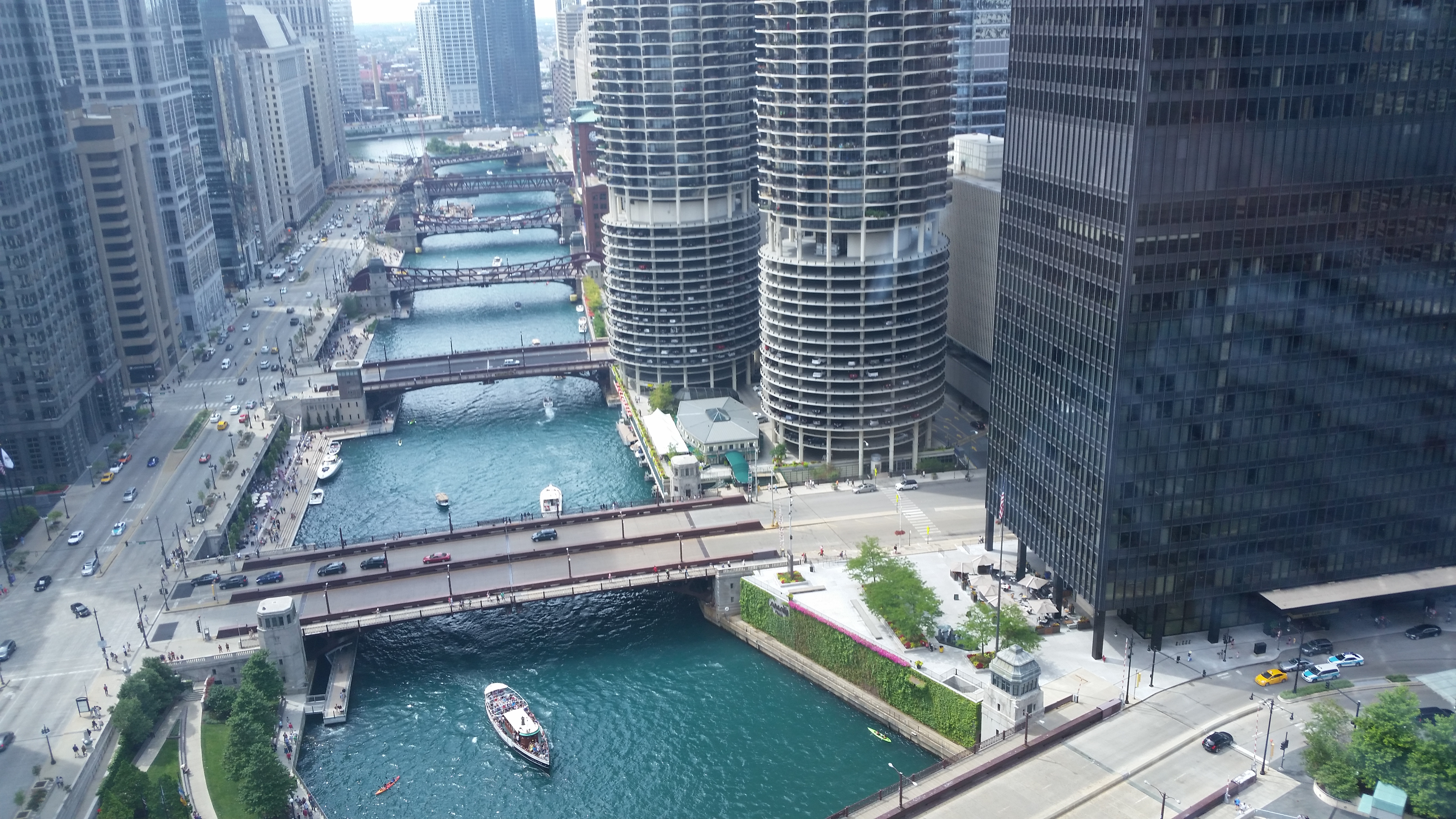January 2, 1900: The Reversing of the Chicago River
January 2, 1900: A project to reverse the flow of the Chicago River is completed, to assist in improved sanitation of the Midwest's largest city.
Prior to this, the North Branch and the South Branch of the River flowed east until meeting, and then east into Lake Michigan. A series of canal locks and pumping stations increased the flow from the Lake into the River, causing it to flow westward to the junction, and then southwest along the new Chicago Sanitary and Ship Canal, paralleling the South Branch.
This worked well for decades, but, by the 1980s, the River was pretty polluted again. In the 1990s, Mayor Richard M. Daley undertook a major cleanup effort.
The tradition of dyeing the River green on St. Patrick's Day arose by accident in 1961, when plumbers were using fluorescein dye to trace sources of illegal pollution discharge into the river. The plumbers then proposed a continuing celebration to the Administration of Daley's father, Mayor Richard J. Daley.
The dyeing of the river is still sponsored by the local plumbers union. Environmental concerns disallowed the use of fluorescein for this purpose, since it was shown to be harmful to the river. The parade committee switched to a mix involving 40 pounds of powdered vegetable dye. Though the committee closely guards the exact formula, they insist that it has been tested and verified safe for the environment.
*
January 2, 1900 was a Saturday. Baseball and football were out of season. Basketball barely existed. The hockey season was about to start. So there were no scores on this historic day.



Comments
Post a Comment